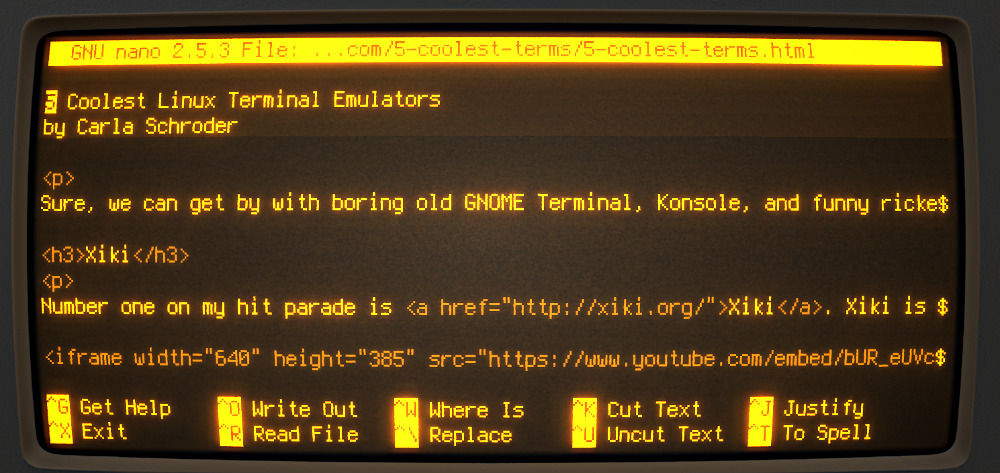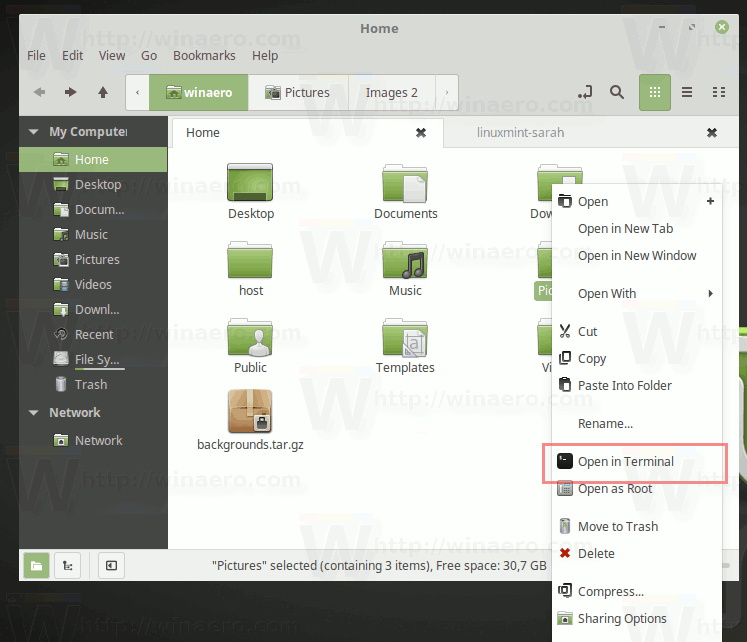
- #Linux command to open in terminal how to
- #Linux command to open in terminal free
- #Linux command to open in terminal windows
After a while, though, this can become cumbersome and, worse yet, inefficient.
#Linux command to open in terminal windows
There are icons and windows and buttons, and you hunt for the one you're looking for, click on items, drag other items, and manipulate graphical representations until a task is complete. Similar to a restaurant menu, graphical interfaces for computers offer users a choice of actions. Ordering food for the table is now as easy as saying "the usual" and waiting for the cups of coffee and bowls of chips and scones to be delivered (usually inconveniently at just the moment we've rolled for initiative, but that's hardly the staff's fault or problem). Being a creature of habit, I eventually stopped referring to the menu because I knew exactly what they have for sale, and I know exactly what I want. They have a menu, and the first few times I ordered, I looked over the menu for several minutes to see what my choices were. There's a café a few streets away from where I live, and I go there every Sunday for a regularly scheduled game of D&D.
#Linux command to open in terminal free
If you have any questions or feedback, feel free to leave a comment. When you run a command in the background, you don’t have to wait until it finishes before you can execute another one. To run a command in the background, include & at the end of the command. Tmux sessions are persistent, which means that programs running in Tmux continue to run even if you close the terminal. With Tmux, you can also create a session and open multiple windows inside that session. Processes running in Screen will continue to run when their window is not visible even if you get disconnected. Or GNU Screen is a terminal multiplexer program that allows you to start a screen session and open any number of windows (virtual terminals) inside that session. There are a number of programs that allow you to have multiple interactive sessions at the same time. If you log out or close the terminal, the process is not terminated.

nohup: ignoring input and appending output to 'nohup.out' The command output is redirected to the nohup.out file. To run a command in the background using the nohup command, type: nohup command & SIGHUP is a signal that is sent to a process when its controlling terminal is closed. To list all running processes, including the disowned use the ps auxĪnother way to keep a process running after the shell exit is to use nohup.Ĭommand executes another program specified as its argument and ignores all SIGHUP (hangup) signals. If you have more than one background jobs, include % and the job ID after the command: disown %1Ĭonfirm that the job is removed from the table of active jobs using the jobs -l command. One way is to remove the job from the shell’s job control using the disown shell builtin: disown There are several ways to keep the process running after the interactive shell session ends. If your connection drops or you log out of the shell session, the background processes are terminated. Keep Background Processes Running After a Shell Exits #

To terminate the background process, use the killĬommand followed by the process ID: kill -9 25177 Move a Foreground Process to Background # If you have multiple background jobs, include % and the job ID after the command: fg %1 To bring a background process to the foreground, use the fg command: fg The output includes the job number, process ID, job state, and the command that started the job: + 25177 Running ping & Use the jobs utility to display the status of all stopped and background jobs in the current shell session: jobs -l >/dev/null 2>&1 means redirect stdout to /dev/null and stderr to stdout To run a command in the background, add the ampersand symbol ( &) at the end of the command:
#Linux command to open in terminal how to
We will show you how to start a command in the background and how to keep the process running after the shell session is closed. In this article, we will talk about the background processes is Linux. Another option is to run the command in the background.Ī background process is a process/command that is started from a terminal and runs in the background, without interaction from the user. The most obvious and straightforward option is to start a new shell session and run the command in it. What if the command takes a long time to finish, and you want to run other commands in the meantime? You have several options at your disposal.

When a process runs in the foreground, it occupies your shell, and you can interact with it using the input devices. This is called running the command in the foreground or foreground process. Typically when you run a command in the terminal, you have to wait until the command finishes before you can enter another one.


 0 kommentar(er)
0 kommentar(er)
